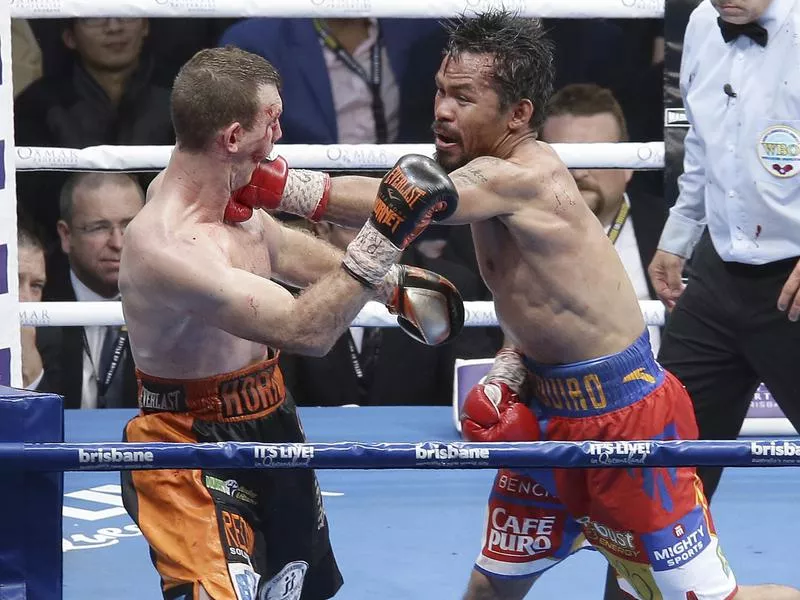
Manny Pacquiao, right, lands a punch to the face of Jeff Horn during their WBO world welterweight title bout in Brisbane, Australia, on July 2, 2017. Pacquiao lost his title to Horn in a stunning, unanimous points decision in front of more than 50,000 people. Tertius Pickard / AP Photo
In boxing, you often hear the phrase “hometown decision” used to justify bad scoring in a fight. In this case, we had a home continent decision — a kangaroo court, if you will.
Manny Pacquiao has been the victim of more screwy decisions than any other fighter this century.
In this fight for the WBO welterweight belt, HBO’s veteran scorer Harold Lederman had it for Pacquiao, 10 rounds to 2. I scored it for Manny 9 rounds to 3. The punch stats bore out what the naked eye could see: Pacquiao whipped Aussie butt:
The CompuBox scorers saw Manny landing 182 total punches to Horn’s 92.
Fifty-nine of the punches Manny landed were jabs. Horn hit with just 19 jabs. That’s 30.6 percent to 9.6 percent.
Manny connected on 32 percent of his punches while Horn only connected on 15 percent. (Though, to be honest, I’ve never been quite convinced that percentage of punches landed is an important stat, or at least more important than just number of punches landed.)
But what about, the skeptic may well ask, the power of those punches? It’s true that the computer can’t calculate how hard a punch is. This is why “power punches” — that is, hooks and crosses to the head and body with some weight behind them — are important. Well, the power punches landed were also in Pacquiao’s favor: 123 to Horn’s 73. Again, Manny’s accuracy was better, 32 percent to 17 percent.
Horn bettered Pacquiao in just one area: punches thrown, 625 to 573.
But if Horn connected with something solid on 90 fewer punches, what were the judges rewarding him for? Swinging hard and missing?
Horn not only was awarded the fight but the decision was unanimous. Many screamed corruption, and for good reason. Stephen A. Smith’s reaction was typical, calling it a robbery.
Horn didn’t hold the WBO welterweight belt long. In his next fight, he was “disarmed and clinically dismantled” in a fight that ended in a ninth-round TKO.
Watch highlights with the sound down, so you don’t have to listen to commentators Teddy Atlas and Tim Bradley (who won a hugely controversial split decision over Pacquiao five years earlier) blather about Horn’s “will and aggressiveness.”
Judge for yourself.